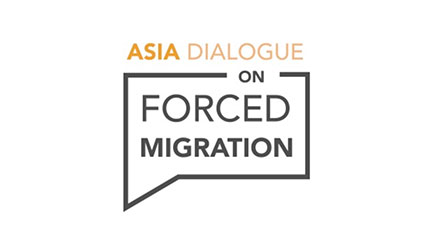Guest poster David Melzer explains why now is a good time for the major political parties to support community broadcasting
In this time of stage-managed election campaigns, and increased role of public relations people in generating news and a tight media market, Australia’s community broadcasters provide an independent voice and a truly local forum for those who are excluded from the mainstream media.
And there couldn’t be a more appropriate time for our major political parties to support community broadcasting – Australia’s largest, non-profit, independent media sector.
Australia is in the healthy situation of having more licensed community radio stations (358) than the number of commercial (274), ABC (65) and SBS (4) stations combined.
Each month, up to 9.5 million Australians (more than half the population) tune in to their local community radio station. Why, you might ask? Maybe it’s because more than 23,000 of their peers participate in the operation of community stations across the country. Maybe it’s because no other radio sector offers more than 77 per cent locally produced programming (that is, not networked) every week tailored to their community, ethnicity, their denomination, their demographic or their disability.
For example there’s SYN-FM in Melbourne, which is restricted to people aged under 26 and in one year trained 4000 young people in broadcasting. JOY-FM is the only radio station in the world operated by and for the local gay and lesbian community. Goolarri Media in Broome are active in media and music production and in providing training and employment opportunities for Aboriginal people in their community.
Most importantly, community broadcasting allows people to be part of decision-making and ownership of stations. Community radio gives people who are otherwise denied it, access to the airwaves. But it’s not just the volunteers who benefit and appreciate it.
Qualitative research shows that people like community broadcasting for local news, for offering the ability to connect or create communities and for more accurately representing our social and cultural diversity than other media, according to a McNair National Listener Survey in 2008. The federal government needs to acknowledge this and provide more sustainable support.
Towards this end, the community broadcasting sector has developed a vision that re-invigorates its role in local communities by enabling the industry to leverage the rollout of digital technology.
The Vision 2015 proposal is community broadcasting’s appeal to the major political parties to fully acknowledge the role and impact community broadcasting has on the nation’s media landscape and its diverse communities. Put forward by national representative, Vision 2015 demonstrates that despite the sector’s strengths, community broadcasting can be improved with strategic government financial support.
Community stations can provide the facilities, training and infrastructure for people who support their ideals to connect with digital media. A level of initial funding support is needed to establish this vision.
In conversation with Peter Godfrey on The Daily Interview last week, Senator Scott Ludlam, communications spokesman of the Greens, agreed that the role of the community broadcasting sector is made all the more significant and important because of Australia’s tightly controlled media market.
According to Ludlam, the community broadcasting sector’s Vision 2015 funding proposal is on target. “In the context of the extraordinary value that is provided by the community broadcast sector, culturally and economically and as training grounds for people, I don’t think that you’re asking for too much.”
Despite the degree to which our national broadcasters – ABC and SBS – are cherished by people who value independent media, they are not enough, and never can be. Despite the degree to which they are resourced, they cannot cover the diverse interests that have developed in this old and new country. They are undeniably national broadcasters – no matter how much they try to dress up and call themselves public or even community, they are not “of” the community.
Recently, the ABC received funding to provide what they described as “town square” services, where people could contribute content. But Australians generally won’t fall for that. Despite the ABC calling themselves “local radio”, people in Cairns know when the overnight program on “their” local radio is coming from Melbourne. Without 10 times the funding, the ABC just cannot be local enough.
The digital future is here. Community broadcasting wants to offer people who believe in independent media and serving their own communities, pathways to digital literacy and digital economies. Community broadcasting wants to provide the facilities, training and infrastructure for people who support their ideals to connect with digital media. And they want to do it with the support of this country’s policy makers.
 More Than Luck is a collection of ideas for citizens who want real change edited by Mark Davis and CPD Executive Director Miriam Lyons. A to-do list for politicians looking to base public policies on the kind of future Australians really want, More Than Luck shows what’s needed to share this country’s good luck amongst all Australians – now and in the future. Click here to find out more. Like what you’ve read? Donate to help make good ideas matter.
More Than Luck is a collection of ideas for citizens who want real change edited by Mark Davis and CPD Executive Director Miriam Lyons. A to-do list for politicians looking to base public policies on the kind of future Australians really want, More Than Luck shows what’s needed to share this country’s good luck amongst all Australians – now and in the future. Click here to find out more. Like what you’ve read? Donate to help make good ideas matter.



